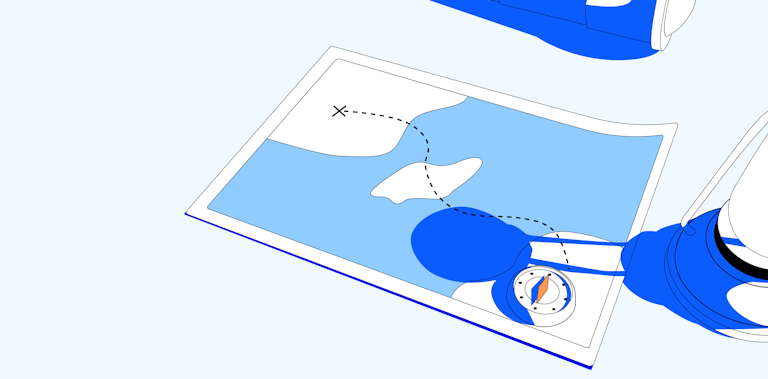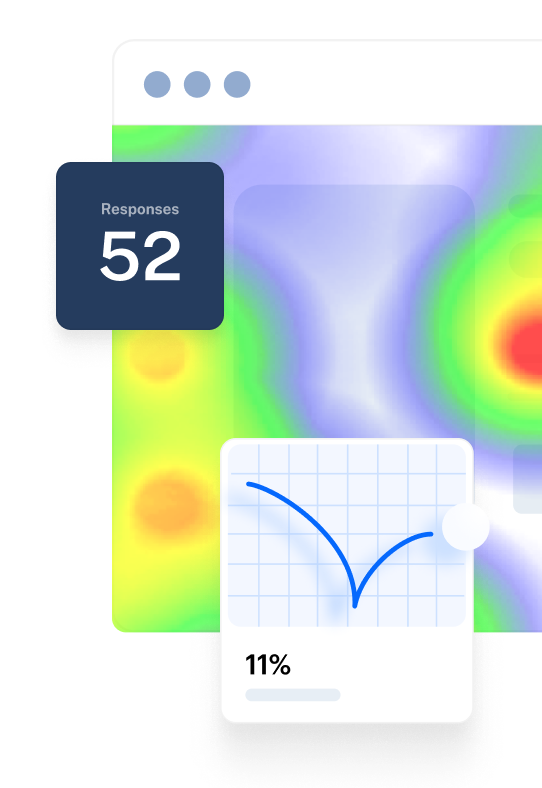Chapter 3
5 Key product discovery principles to keep in mind
Before we dive into what product discovery involves in a practical sense, it’s important to set out some fundamental principles to guide you on your journey. Because while every product manager has a different idea of the exact process and techniques that work best, doing product discovery right depends on truly understanding it.

For Sebastien Phlix, Product Manager at N26, this is an important principle in itself:
Instead of getting hung up on fancy techniques, focus on internalizing the principles of product discovery. Once you understand why you’re doing it, the rest will follow easily.

Sebastien Phlix
Product Manager at N26
To give you some inspiration for principles to keep in mind, we asked experienced product managers from a range of companies to give us their thoughts. Over time, you’ll develop your own guiding mantras. But if you’re new to product discovery, these bits of advice can help you get started.
1. Failing is your friend
Since product discovery is always a step into the unknown, it’s natural to feel a little nervous when getting started. Laura Haines, Product Manager at Canva, thinks this feeling is essential:
Be prepared to feel both excited and scared. If you’re not at least a little bit scared, then you’re unlikely to achieve big things for your business, product, and team.

Laura Haines
Product Manager at Canva
One reason for this is that failure is often just around the corner. Product management veterans know that regardless of experience, your assumptions will get proved wrong by user feedback and behavior all the time—and that’s OK.
In fact, failing is more than OK. To a large extent, it’s what product discovery is all about. Failing helps you learn. Properly analyze each of your failures, and you’ll get closer and closer to a solution. Stay attached to your original idea, and you’ll get stuck in a rut.
Freddie Beesely, VP of Product at Attest, sees this as a crucial product discovery pitfall to avoid:
It’s really important to avoid getting too invested in a single idea. I often remind myself and my team that nine out of ten ideas will fail regardless of who you are or how much data you have.

Freddie Beesely
VP of Product at Attest
Instead, Freddie recommends “testing as many ideas as you can to find a winner.” The best product managers always listen to their users—not their ego.
2. Give yourself enough time
The tech industry is famously fast-paced. Since the 90s, many new ways to iterate and deliver new features faster than ever have been invented. And as product development has become more agile, the expectations of company leads and stakeholders for fast progress has increased too.
But while proof of progress is often tied to shipping features, it’s crucial that you don’t fall into the trap of skipping or rushing product discovery to deliver faster. A new feature is much less likely to impact your company’s key metrics if you don’t spend enough time understanding the problem.
Even though this might seem obvious, Sebastien still thinks it happens far too often:
One of the most common product discovery pitfalls is not doing it because you ‘don’t have time.'

Sebastien Phlix
Product Manager at N26
Of course, in an ideal world very few product managers would choose to skip product discovery. But external time constraints and pressure from above can force product teams into bad routines.
Luckily, there are ways to open up the time you need for product discovery without stretching deadlines. Sebastien recommends building an autonomous team to handle execution:
To give yourself the space to do discovery as a product manager, delegate delivery to designers and engineers as much as possible.

Sebastien Phlix
Product Manager at N26
Arjen Harris, Head of Product at Maze, says it’s all about fine-tuning your product discovery process around the specific product you’re working on:
As product managers, we need to be strategic with our time. So it’s essential to set up a clear and repeatable process you can follow every time. Figure out which discovery techniques work well for your product, and draft each step before you start so you can wrap it up efficiently.

Arjen Harris
Head of Product at Maze
Taking smart actions like these will help you make the most of the time you have for product discovery—so you can be confident that new features will have the impact you want when it’s time to ship.
3. Treat your users like people
While product discovery is never an exact science—which is what makes it interesting—it often requires a scientific mindset. Forming solid hypotheses, running effective experiments, and analyzing data are just some of the key activities that can only be done successfully with a logical, unbiased approach.
In a similar way, it’s vital to avoid influencing participants towards certain ideas or outcomes during user interviews and usability testing. But at the same time, the more you can make your users forget that they’re being analyzed, the more they will feel comfortable with giving you open and honest answers.
Marc Davies, Product Lead at Oliva, thinks building rapport with users is super important:
Learn how to organize and run great meetings. So much comes down to the way you make use of people's time and attention.

Marc Davies
Product Manager at Oliva
By taking a relaxed, informal approach to conversations with users, you’ll be able to make the most of the time you have with them. Nadine Krishnamurthy-Spencer, Product Manager at We Are With You, agrees that while preparing a bank of non-leading questions is “absolutely key,” the best user interviews are the ones that flow naturally:
When it comes to running interviews, you have to be a bit more fluid than just reading from a script. If people don’t feel like it’s a genuine conversation, they’ll hold things back.

Nadine Krishnamurthy-Spencer
Product Manager at We Are With You
4. Validate everything
In many ways, the ultimate goal of product discovery is always validation. By the end of the process, you don’t just want to have a solution ready for development—you also want evidence to validate that it’s the right one for your users.
But to help you reach this final validation, you should look for more opportunities to validate your work along the way. Depending on the outcome, you might end up in a totally different place to where you thought you were heading—that’s what makes product discovery exciting.
The first thing you should validate is your initial assumption. Arjen has a story that demonstrates how important this is:
We thought if we inspired users with other use cases during project creation, they would create more projects. So we designed a prototype and ran a usability test with Maze. The result? Customers hated it! We quickly realized we were complicating a simple flow without adding any value.

Arjen Harris
Head of Product at Maze
Arjen’s team immediately cancelled development of the feature to focus on areas where they knew they could add value. Not the takeaway they expected, but a valuable one.
Once you’ve validated your assumptions with user feedback, you could also consider validating the feedback too. When working on an internal tool for her colleagues, Nadine observed them to see if their words matched their behavior. It led to a real ‘a-ha!’ moment:
Based on their feedback, I wanted to see how my colleagues were using our back-office tool so we could improve it. What I actually saw was that they barely used it—and that all the other tools they were using were creating the inefficiency! If I’d stuck to what I was hearing in interviews without taking that extra step, I’d probably still be wondering why things weren’t improving.

Nadine Krishnamurthy-Spencer
Product Manager at We Are With You
As a result, Nadine’s team radically changed strategy to fix other high-impact problems. The takeaway: always validate what your users are telling you with data from their actual behavior.
5. Product discovery never ends
Every product team has its own way of working. Maybe your team focuses on delivering one feature or set of features before moving onto the next, or maybe different team members handle different stages of the product discovery and development journey.
So while breaking down product discovery as a step-by-step, linear chronological process is helpful for understanding it, in practice it never really has to end. The best product managers always stay close and connected to their customers, whatever stage they’re at. When we interviewed product discovery coach Teresa Torres, she told us that "a digital product is never done. So we want to make sure we're getting constant feedback from our customers about whether or not we're building the right things."
Pol Narbona, Product Manager at Canva, likes to have product discovery going on all the time:
Since product discovery activities don’t necessarily imply any development work, you can always run discovery in parallel to delivery. If you have user interviews booked every week, you’re actually always doing product discovery.

Pol Narbona
Product Manager at Canva
Nadine agrees:
Even when you have a product underway, you can still gather insights for the next iterations. You could argue that discovery never stops—it just stops being your only focus.

Nadine Krishnamurthy-Spencer
Product Manager at We Are With You
As long as you keep the prototypes that you test quick and simple, you could even have an entire team fully dedicated to doing product discovery all the time. This is a dream for some product managers—numerous people we interviewed for this guide see product discovery as the most interesting part of the job.
Diego Sanchez, Product Manager at Buffer, is a particularly big fan:
I love working on new experiences, new products, new features—anything that’s new. The problem space is where I feel most comfortable, and where I like to spend most of my time.

Diego Sanchez
Product Manager at Buffer
So whatever principles you take away from this chapter, perhaps the most important is very simple: enjoy the ride. Stay passionate about problem-solving and getting to know your users, and as Sebastien said at the start of this chapter: “the rest will follow easily.”



